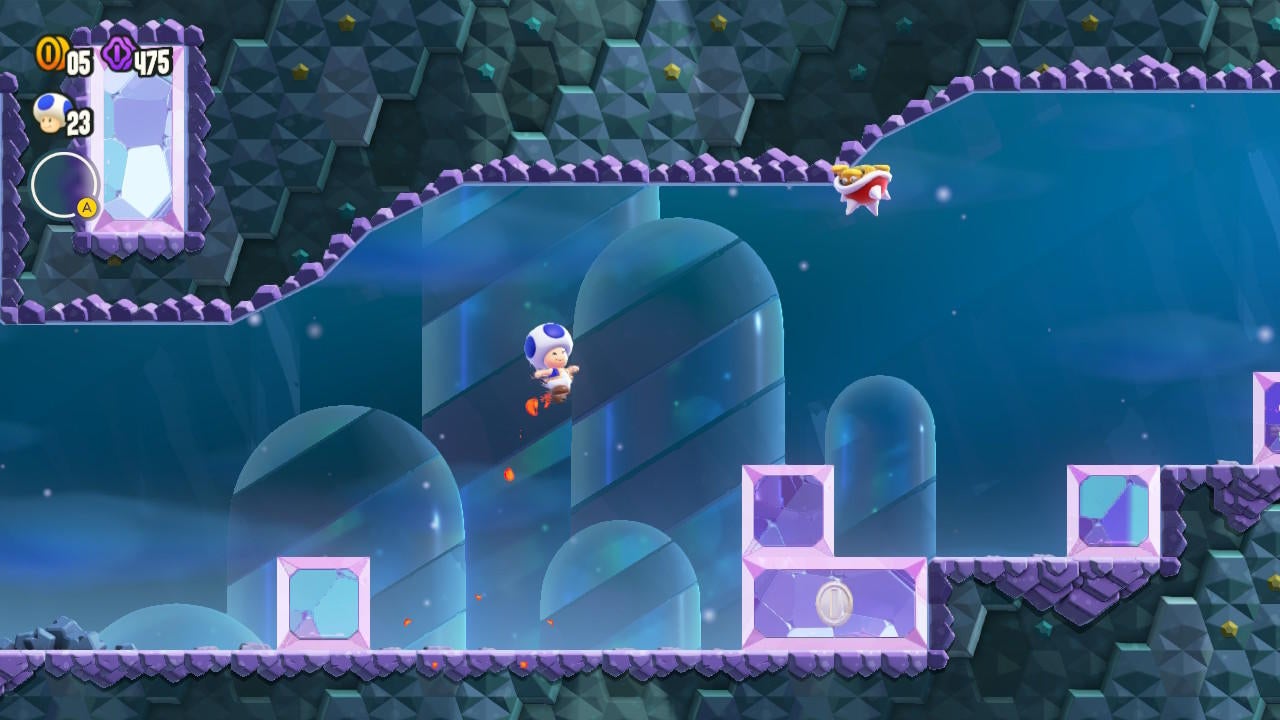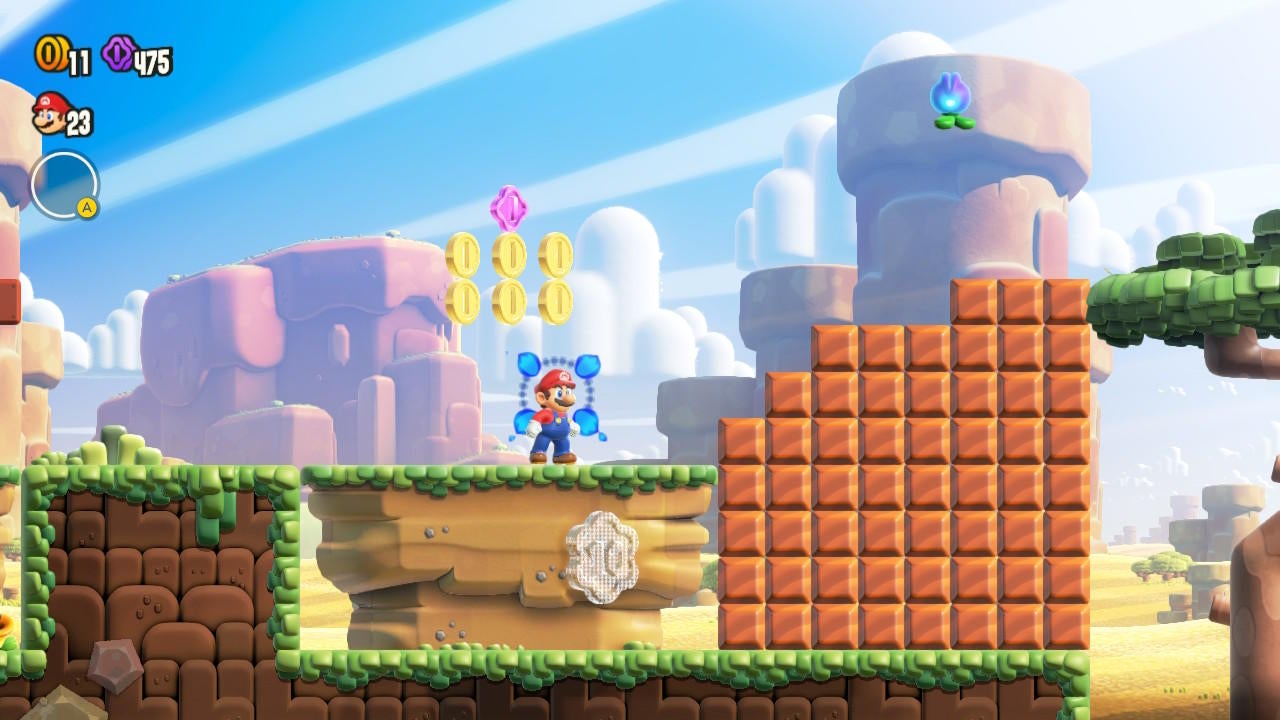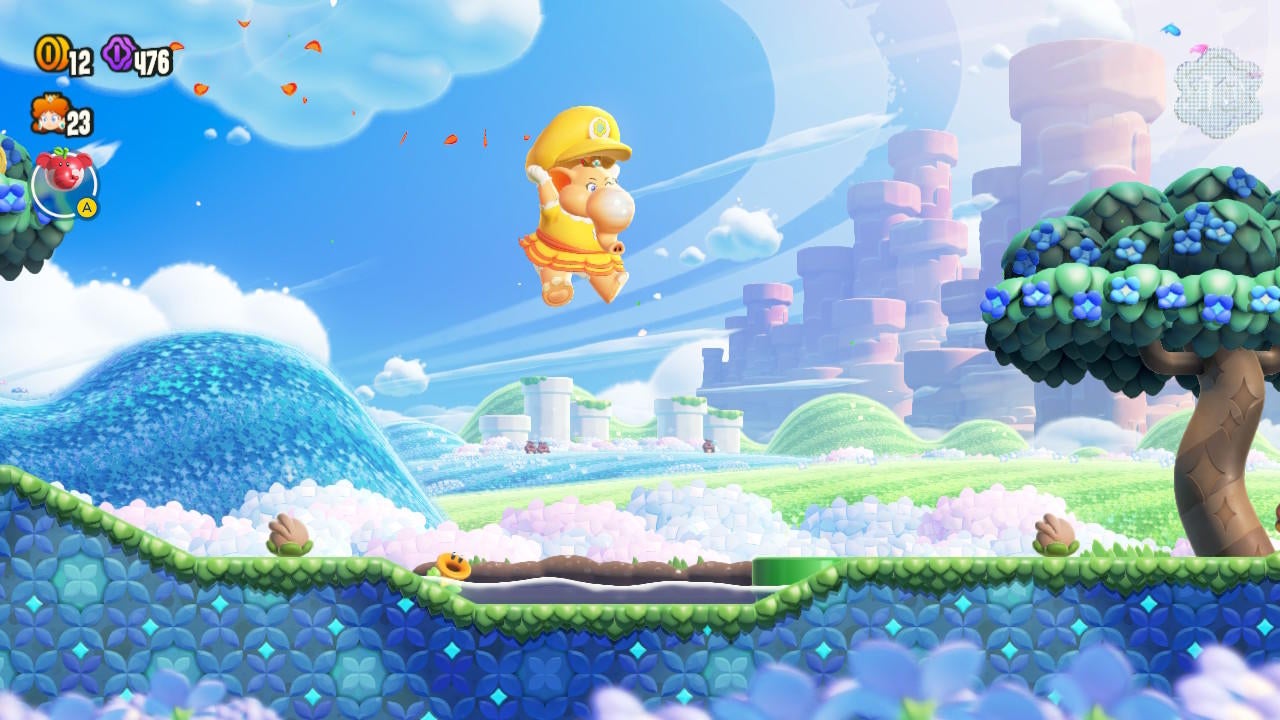Super Mario Bros. Wonder Preview: Badges Make It Better
Badges have drastically changed the formula for Super Mario Bros. Wonder.
Super Mario Bros. Wonder is coming to Nintendo Switch on October 20th, and when it does, the game will offer a number of changes from the traditional Mario formula. Ahead of our full review, ComicBook.com had an opportunity to preview some of the new features players can expect to see. In a hands-on preview back in August, we got to experience some of the game's new Badges in a limited capacity. After having a bit more free time to spend with the Badges, we were able to get a much better feel for how they fit into the game, and the impact they could have on the Mario series moving forward.
How Badges Work in Super Mario Bros. Wonder

Badges are one of several new additions to the franchise that have been added as part of Super Mario Bros. Wonder, and they play a big role in the game. As players progress, they unlock different badges, and once equipped by Mario and friends, they give them special new abilities. Once unlocked, players are able to pick any Badge they like and use it in almost any level. Players can do this straight from the world map, and they can also swap out Badges immediately before each level begins (the game even offers suggested Badges before levels).
Action Badges give Mario and friends new abilities, changing the way the character controls. Early into the game, one of my personal favorite Badges is Floating High Jump. This Badge gives any character the ability to jump the way Luigi did in Super Mario Bros. 2. It's a smart inclusion, as it allows the player to use that iconic ability without being locked into using one particular character. While some Badges are handy all the time, others work best in specific circumstances; for example, the Dolphin Kick makes swimming a whole lot easier, allowing Mario and friends to swim further and faster in water.

While Action Badges focus on giving Mario and friends new powers, Boost Badges focus on making the game a little bit easier. The Auto Super Mushroom allows a player to start each level with a Super Mushroom, while Safety Bounce ensures players bounce out of pits, lavas, and poison swamps one time per fall. It's easy to see how this could make the experience friendlier for younger players, or those less skilled at platformers. Players that need the extra lives will also be interested in the Coin Reward Badge, which gives coins every time Mario and friends defeat an opponent. There's also the Sensor Badge, which tips players off about nearby "significant items," including Wonder Flowers and 10-flower coins.
Badge Challenges
Mastering Badges is a major part of Super Mario Bros. Wonder, and players will find Badge Challenges strewn throughout the game's worlds. In World 1, players will find the Wall-Climb Jump Badge Challenge. The Wall-Climb Jump is an Action badge that's tricky to master; when a player jumps at a wall, they can jump straight up once by pushing the 'B' button. It's a neat Badge, but those with longtime Mario experience might struggle with it, as Mario's normal wall jump sees him moving in a diagonal pattern; even though I'd spent a little time with it in our preview event in August, I still found myself struggling with the Badge Challenge.

One of the interesting things about Badges is that they remain activated until the player turns them off. This means that they keep working even when a power-up has been grabbed, or if an enemy makes contact. To swap out or turn-off a Badge, players have to finish or exit the stage. That might sound irksome, but it does prevent them from becoming overpowered; being able to freely jump back and forth between Badges, rather than making a strategic selection before each stage would make the game a little too easy. One of the only frustrating things I found about the Badges is that none of the Yoshis can use them. Since the Yoshis and Nabbit have been aimed at younger players, they have different control schemes. I can understand the development decision, but as a big fan of Yoshi, this discouraged me from using him.
From our time with the game thus far, Super Mario Bros. Wonder seems to be paving a bold path forward for the 2D series. One of the things Nintendo struggled with in the New Super Mario Bros. games was deciding whether or not all of the characters should play the same, or if they should have different abilities (like in Super Mario Bros. 2). Badges already seem to offer the best of all worlds, keeping the characters all the same at the start, but allowing players to tailor their experience the way they see fit; they can also make the game more enjoyable for young and inexperienced players. This could be a game changer for the 2D Mario series, and I can see it sticking around for a long time to come!
Are you planning to pick-up Super Mario Bros. Wonder this month? What do you think of the game's badges so far? Share your thoughts with me directly on Twitter at @Marcdachamp or on Instagram at @Dachampgaming!
0comments